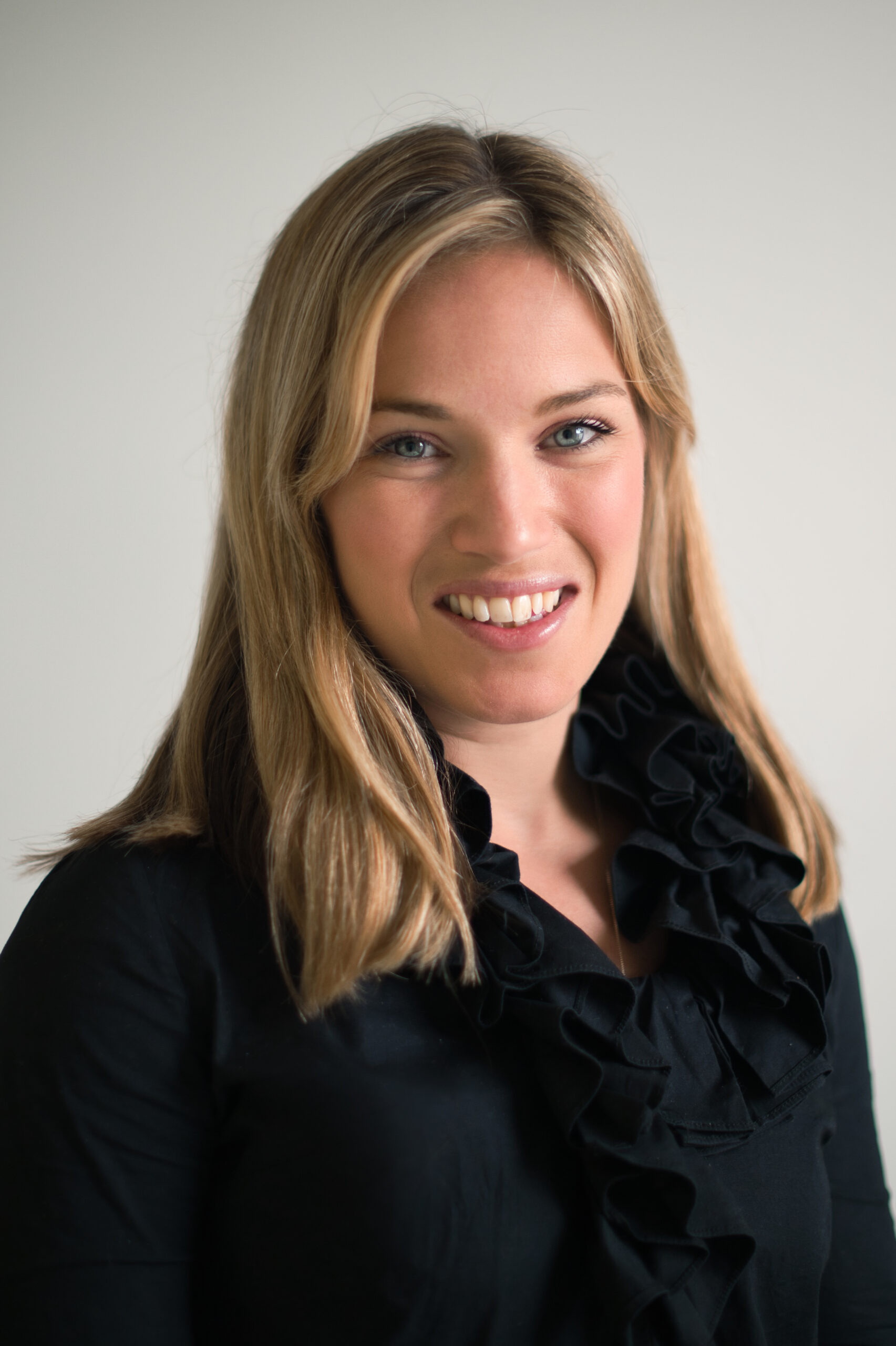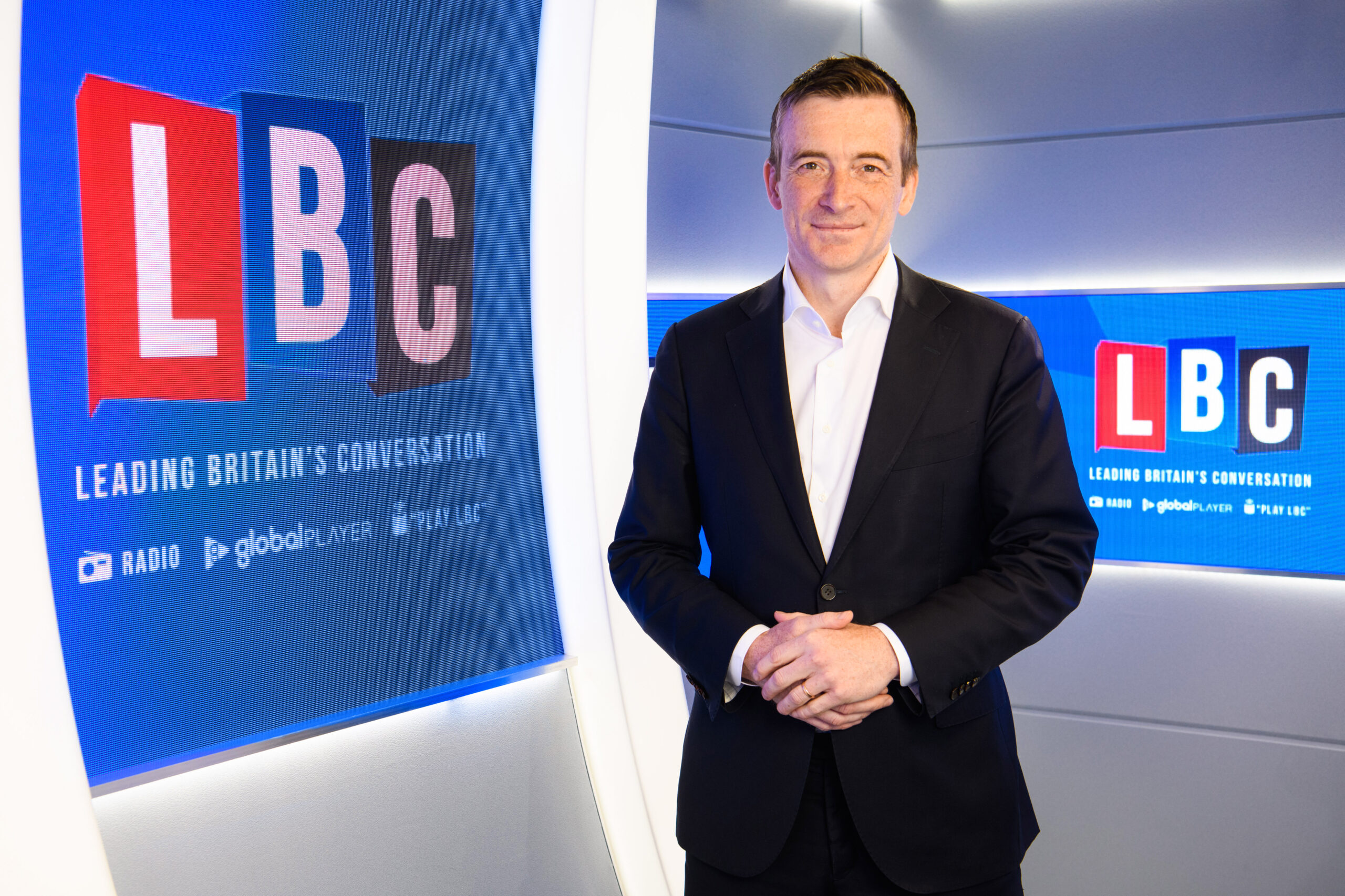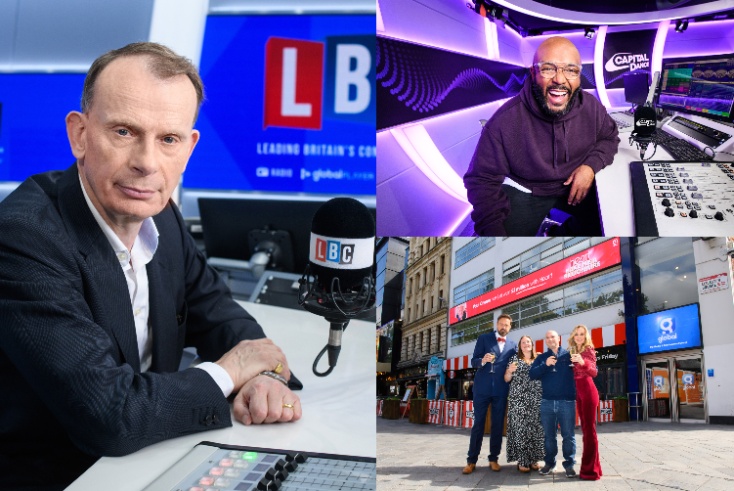Feature: 50 Years of Commercial Radio
Global’s director of commercial audio and the senior managing editor for LBC tell The Media Leader about changes to its brands, audiences and tech, and what’s next.
“In an era of constant information, capturing and maintaining attention is a precious commodity, and commercial radio excels in this regard.”
Katie Bowden, the director of commercial for audio at global, says the Global commercial team is “always reminding” advertising partners of the power and scale of commercial radio, especially now that it attracts more listeners than the BBC. She also stresses the bond between radio and its audience has “grown stronger” as a “trusted companion” in people’s lives since the pandemic.
Other major changes Global has seen in recent years have included technological advancements and the adoption of “tentpole brands” like LBC, Heart and Capital.
 Bowden (left) adds: “Technology has been a big catalyst for growth — it’s provided new ways for people to listen, new ways to interact and new ways for brands to reach audiences. DAX, our digital advertising exchange, provides a deep understanding of audience targeting, driven by data insight, and that’s been a game-changer for advertisers. Coupled with the impressive growth of Global Player, we’ve been able to evolve and adapt to the changing landscape of commercial radio.”
Bowden (left) adds: “Technology has been a big catalyst for growth — it’s provided new ways for people to listen, new ways to interact and new ways for brands to reach audiences. DAX, our digital advertising exchange, provides a deep understanding of audience targeting, driven by data insight, and that’s been a game-changer for advertisers. Coupled with the impressive growth of Global Player, we’ve been able to evolve and adapt to the changing landscape of commercial radio.”
Radio’s technology transformation has also led to a growth in advertisers ability to execute multi-platform and integrated campaigns across radio, social and video, and more opportunities for using assets on client’s own channels to extend reach and impact.
“The multi-platform landscape has ushered in a new era of data sophistication,” remarks Bowden. “This wealth of digital data benefits advertisers, offering deeper insights into audience behaviour and preferences. With a comprehensive understanding of our audience, we can tailor advertising efforts in a more refined and relevant way.”
Commercial radio can keep its record share of listening and weekly reach through attention, trust, innovation, and breadth of audience, argues Bowden.
She also says by continuously exploring new avenues and embracing creative approaches, it is possible to ensure commercial radio remains “a dynamic and forward-thinking medium”.
She explains: “Across the board, the depth of radio partnerships today is vastly different from what we might have seen 50 years ago. Brands can now engage in deep and meaningful campaigns that resonate with their target audience. With all of our radio brands, the commercial opportunities are endless and they can offer brands an authentic, versatile, engaging and entertaining platform to connect with audiences.”
The near-term priorities for Global’s radio proposition, she outlines, include, “continued growth and sophistication of audience planning and targeting”. This was expanded upon at this year’s Tuning In conference where Global colleagues Mark Hatwell and Faye McDowall told attendees they had made the “untargetable” audiences on walled garden smart speakers “targetable” using AI.
Tuning In: live radio on smart speakers now ‘targetable’
LBC going national ‘put rocket-fuel under the brand’
LBC was the first legal commercial radio station to broadcast on 8 October 1973 and is now Britain’s biggest commercial news talk brand reaching 3.1 million weekly listeners.
Bowden highlights LBC’s listening levels are “on par” with high levels of attention associated with podcast listening, which she says is “great for advertisers wanting to connect authentically with listeners.”
 Tom Cheal, senior managing editor at LBC, says the decision to go from a London-only to national station in 2014 “put rocket-fuel under the brand”. It is now available on DAB nationwide through Global Player and on FM and AM frequencies, as well as on social media.
Tom Cheal, senior managing editor at LBC, says the decision to go from a London-only to national station in 2014 “put rocket-fuel under the brand”. It is now available on DAB nationwide through Global Player and on FM and AM frequencies, as well as on social media.
This takes us to another significant milestone in the station’s history, and the wider radio industry — bringing cameras into radio studios.
Cheal (right) explains: “We’re always on the hunt for new ways of extending our reach and ready to embrace the power of digital platforms. LBC was the first UK radio station to install HD cameras in our studios, and with the evolution of social media, the launch of Global Player, as well as the introduction of smart speakers — it’s a rich environment now for people to engage with our best content, however and wherever they choose.”
One audience that he says has been “surging” is younger audiences, attracted by LBC’s “winning formula” to engage across on-air, online and social media platforms. According to the last Rajar, LBC had 197,000 weekly listeners aged 15-24, a figure which has increased by 61% over the last five years.
Cheal says one of LBC’s biggest draws is that it provides listeners with direct access to those in power. In this regard, throughout the pandemic, LBC and its presenters “came into their own,” he adds, which resulted in a shift of a morning listening peak to right across the day as people needed information they could trust, as well as companionship. Since the pandemic, he maintains, LBC’s role of holding power to account and scrutinising government decision-making has “reasserted itself”.
Such efforts were boosted by Andrew Marr joining Global in 2021, part of an exodus of on-air talent moving to commercial broadcasting.
Cheal says Marr coming aboard was “a great endorsement” for the station’s achievements, and that it also “speaks volumes for the rude health commercial radio is in”.
He adds: “When Andrew joined LBC, he said he wanted to get his voice back and ruffle some feathers. I think it’s fair to say he’s done just that. He’s really embraced the freedom LBC offers and his show has seen clear and consistent audience growth on air and across our digital platforms. And he’s as delighted as we are that he’s become a surprise hit on TikTok too.”
Global says Marr regularly gets more than a million views on the short-form video platform.
How commercial radio is modernising 50 years on
Global’s radio media brands now include Capital, Heart, Classic FM, LBC, Smooth, Radio X, Capital XTRA, and Gold, and it also has an on-demand audio app, Global Player, which launched in 2017, and a Digital Ad Exchange (DAX) for advertisers to access inventory digitally was launched for audio in 2014.
The company retained the top weekly reach and share of listening for all of its combined stations, according to the latest Rajar figures, and reached 24.9 million weekly listeners, a year-on-year increase of 4.5%.
This article is part of The Media Leader‘s series to commemorate commercial radio’s 50th anniversary. You can find the other articles in the series here.
This week: looking back on 50 years of commercial radio
Adwanted UK are the audio experts operating at the centre of audio trading, distribution and analytic processing. Contact us for
more information on J-ET, Audiotrack or our RAJAR data engine. To access our audio industry directory, visit
audioscape.info and to find your new job in audio visit
The Media Leader Jobs, a dedicated marketplace for media, advertising and adtech roles.





 Bowden (left) adds: “Technology has been a big catalyst for growth — it’s provided new ways for people to listen, new ways to interact and new ways for brands to reach audiences. DAX, our digital advertising exchange, provides a deep understanding of audience targeting, driven by data insight, and that’s been a game-changer for advertisers. Coupled with the impressive growth of Global Player, we’ve been able to evolve and adapt to the changing landscape of commercial radio.”
Bowden (left) adds: “Technology has been a big catalyst for growth — it’s provided new ways for people to listen, new ways to interact and new ways for brands to reach audiences. DAX, our digital advertising exchange, provides a deep understanding of audience targeting, driven by data insight, and that’s been a game-changer for advertisers. Coupled with the impressive growth of Global Player, we’ve been able to evolve and adapt to the changing landscape of commercial radio.”